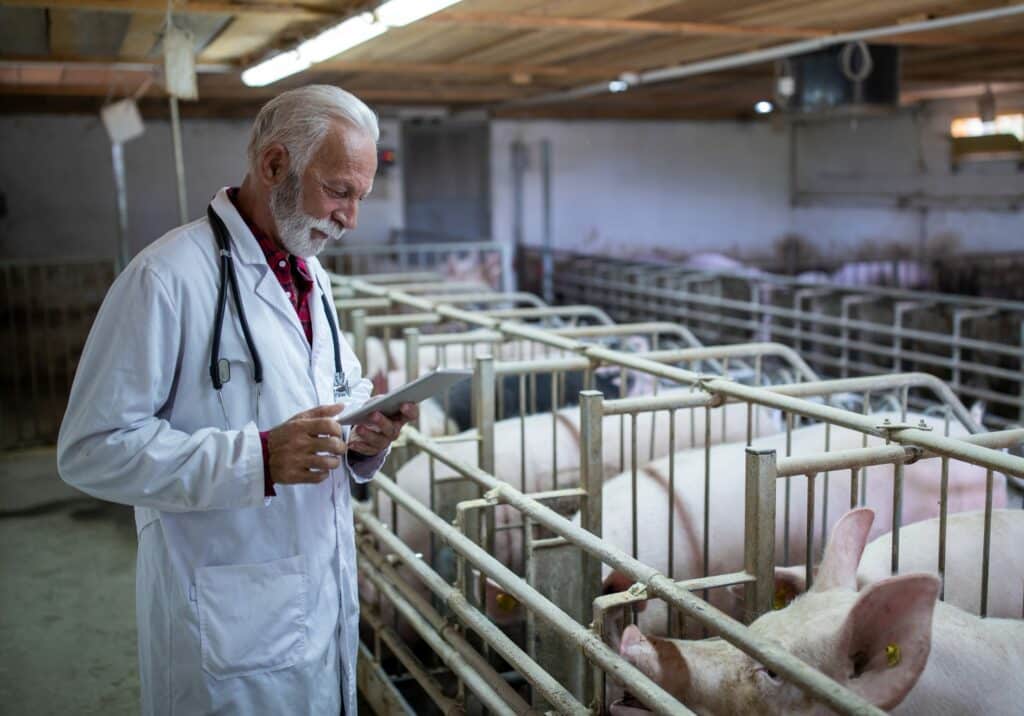by Dr Peter Evans
Resilience is defined as “the capacity to recover quickly from difficulties; toughness”. After witnessing outbreaks of African swine fever (ASF) in commercial farms, small-scale farms, and informal pig keepers, it is worthwhile reflecting on whether the affected farmers exhibit resilience. There are various elements within the timeline of dealing with a disaster that are important to note.
- The first is accepting that disease has got into your piggery; that is, after all the questions and doubts have been dealt with: “This cannot be happening to me; I have biosecurity measures in place; the seller guaranteed the pigs were healthy; is the veterinarian/laboratory assessment correct?” As the realisation of the crisis sets in, the resilient farmer primarily looks to do the best for his/her animals, while others may look for ways to reduce their losses, and yet others go into denial/hiding. It takes extreme toughness to cull animals, both from a compassionate aspect, but also with the knowledge that this action carries serious financial implications, maybe even financial ruin.There has been a global shift in ASF outbreak management; other options are now available instead of the culling and disposal of the entire at-risk pig population. The modern way of dealing with ASF takes into account that although it is fatal, the disease is not highly contagious (i.e. it spreads slowly), so options like salvage slaughter, where positive animals are disposed of and proven negative animals are sold as pork, are available in certain circumstances. The decision regarding which group(s) of pigs need to be slaughtered needs to be made without delay, but with a clear mind, taking all the relevant information into account. Only those persons with mental toughness, who have prepared themselves for a possible disaster, will take the most appropriate course of action.
- The second step is declaring the disease outbreak to your board of directors, financiers, banks, and shareholders, and ensuring that they understand you are doing your best to manage the extent of the losses.
- Start to determine the extent of the loss, although this can only be finalised when the disease has run its course. At this point, the loss in production will be defined, cash flow projections follow, and then decisions can be made as to whether the business can (re)start realistically. Invite advisers in at this point to assist in the planning phase to ensure rapid and sustainable production going forward. Financing options form a major part in the recovery process of the piggery; the more honest you are with stakeholders in your business, the likelier support will be forthcoming.
- Compile a thorough SWOT analysis to evaluate where the shortcomings in biosecurity were in order to prevent this from happening again. All possible routes of entry of the virus need to be examined and addressed to prevent future incursions.
- Lastly, if it had not been part of piggery’s protocols and standard operating procedures (SOP) already, use the opportunity to build a solid, comprehensive contingency plan. Lightning does sometimes strike twice – there is no guarantee that ASF (or any other dread disease) will not somehow creep back into the piggery.
Surviving an ASF outbreak in your pig herd is extremely tough, not only financially, but also emotionally, and those farmers who are not mentally tough are more likely to make poor decisions. In this case, smaller farmers are the most vulnerable because the financial burden is immense – in some cases, their entire life savings are contained in this small unit. Another reality is that larger farmers are more likely to survive as their business will be easier to refinance. Those pig owners with only few pigs will either sell pigs quickly without knowing why some of them died, or simply let nature take its course.
In planning a new piggery, expanding an old piggery, or just revamping, separation of pigs by age and stage of production by room, house, or site are key factors in being able to save as many pigs as possible during an outbreak. Most importantly, adopting proper biosecurity measures as set out in the pig compartment standards is fundamental to reducing the risk of disease incursions into a piggery.
SAPPO is often asked why compartments are necessary, especially when, as is the case currently, some disruptions in live pig and pork products exports are occurring. The simple answer is that trading partners will reopen trade in a shorter period from compartments as compared to the whole country. A disease survey and/or additional tests in a few compartments can be performed in a matter of days/weeks, whereas a country-/district-wide survey may take months. The experience in South Africa has been that, despite the surge in ASF over the past three years, minimal disruptions have occurred, although the recent spread of foot and mouth disease (FMD) has caused some temporary trade restrictions on pigs/pork.
Read more about African swine fever disease control guidelines and the compartment system here: https://sappo.org/animal-health/.
The South African Pork Producers’ Organisation (SAPPO) coordinates industry interventions and collaboratively manages risks in the value chain to enable the sustainability and profitability of pork producers in South Africa.
















